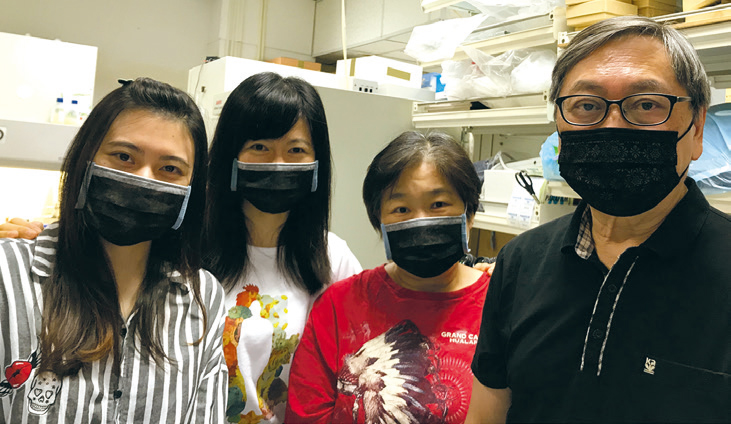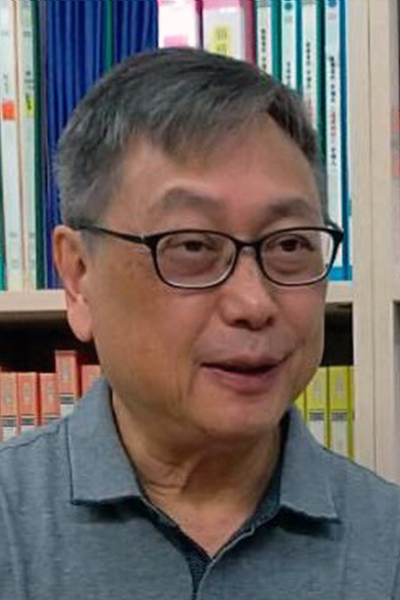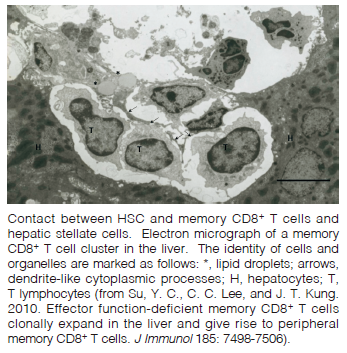Lymphocyte Development and Function
I. Generation and maintenance CD8 T lymphocyte memory
We have previously shown that a short-term IL-4 exposure during TCR stimulation of naïve CD8 T cells resulted in the generation of long-lived and functional cytotoxic T cell memory. This result supports the concept that T cell longevity can be determined at the time of antigen encounter and that the high efficiency memory induction system we have established is a valuable tool in the analysis of cellular and molecular mechanisms of memory development. At the present time, our efforts are focused on the role played by the liver as well as cellular and molecular mechanisms various costimulatory molecules play in the generation and maintenance of memory cytotoxic T cells. Results from this work may have implications on immune intervention such as tumor immunotherapy and treatment of allergic diseases.
II. Probing lymphocyte development and function through ENU mouse models
Using ENU-induced genome-wide mutagenesis, we have a number of mutant mouse strains suitable for studying lymphocyte development and function. One mutant, named I-A12%, with a generalized ~8-fold reduction in H2-Aα expression in all cells known to express H2-Aα is being actively studied, focusing on the differential quantitative requirement for H2-Aα in intrathymic CD4+ T cell development, antigen processing/presentation in the periphery, autoimmunity, and altered B cell development and function in the context of both antigen-dependent B cell receptor signaling and antigen-independent B cell receptor tonic signaling.
- PDF, 1978-1982, Lab. Immunol., NIAID, NIH, USA
- Ph.D., 1978, Dept. Microbio. Immunol. U. Colorado Med. Sch., USA
- BS, 1974, Dept. Biology, Illinois Inst. Tech., USA
- Huang, L.-R., Chen, F.-L., Chen, Y.-T., Kung, J. T. (2000) Potent induction of long-term CD8+ T cell memory by short-term IL-4 exposure during T cell receptor stimulation. Proc. Natl. Acad. Sci. USA 97: 3406-3411.
- Chen, Y.-T., Kung, J. T. (2005). CD1d-independent acquisition of prompt IL-4 gene inducibility in thymus CD161(NK1)-CD44lowCD4+CD8- T cells is associated with CDR3-diverse and biased Vβ2/Vβ 7/ Vβ 8/ Vα3.2 T cell receptor usage. J. Immunol. 175: 6537-6550.
- Su, Y.-C., Lee, C.-C., Kung, J. T. (2010) Effector function-deficient memory CD8+ T cells clonally expand in the liver and give rise to peripheral memory CD8+ T cells. J. Immunol. 185: 7498.
- Lee, C.-C., Kung, J. T. (2012) Marginal zone B cell is a major source of Il-10 in Listeria monocytogenes susceptibility. J. Immunol. 189: 3319.
- Chen, Y.-T., Su, Y.-C., Chang, M.-L., Tsai, P.-F., Kung, J. T. (2017) Low level MHC-II expression leads to suboptimal Th cell response, increased auto-aggression, and heightened cytokine inducibility. J. Immunol. 198: 1928-1943.
- Chen, Y.-T., Su, Y.-C., Kung, J. T. (2018) B cell development sans B cell receptor responsiveness due to unfolded protein response–triggered Mef2c protein degradation. J. Immunol. 201: 2885-2898.
- Chen, Y.-T., Kung, J. T. (2020) Rapid death of follicular B cells and Burkitt lymphoma cells effectuated by Xbp1s. J. Immunol. 204: 3236-3247.


